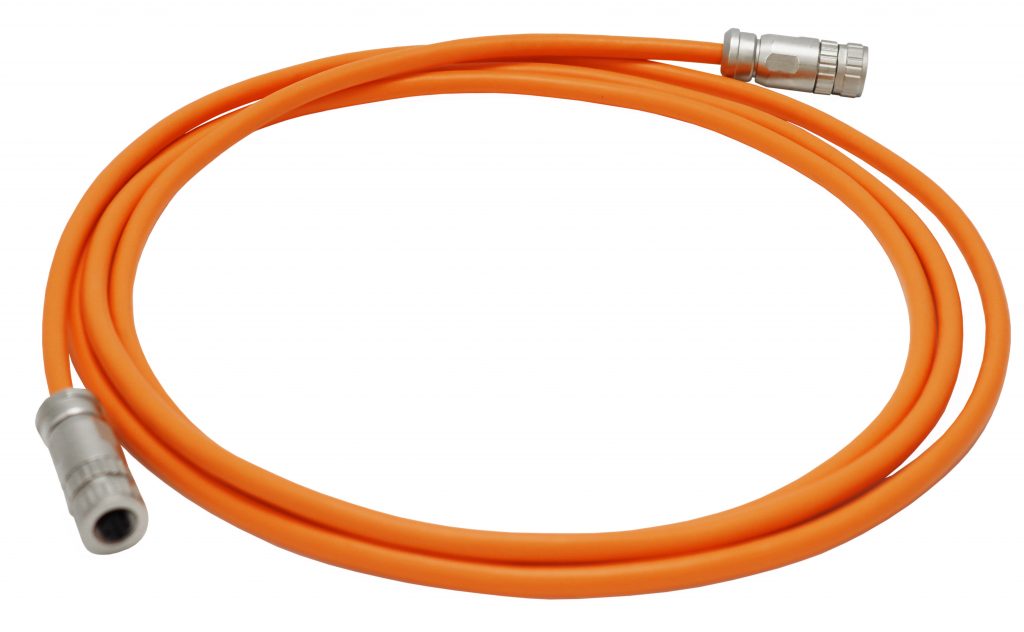Vented Pressure Transducers
Vented pressure transducers provide true water level measurements without the need for barometric compensation. They function with the aid of a vent tube that terminates behind the transducer diaphragm, providing an automatic cancellation effect for barometric pressure.
The most common deterrent for using a gauged pressure transducer is the vent tube. The biggest worry is keeping the vent tube dry. Vent tubes can cause erroneous barometric compensation due to dampness.
Traditionally to keep vent tubes dry, desiccant capsules that need to be replaced regularly are used. Depending on the environment, this could mean frequent visits to the field.
However, when the vented tubing is protected and properly maintained, vented pressure transducers are accurate and can perform very well, especially in shallow applications.
LevelVent 5 Vented Cable Design
With this knowledge in mind, when designing the LevelVent 5, Solinst took many steps to ensure the vent tubes remain dry.
From the beginning, the vent tubes are protected from moisture.
Before the Vented Cables are shipped, the vent tubes are blown dry with nitrogen gas, and capped. This ensures the vent tubes are dry when the product is received.

LevelVent 5 Vented Cable with Storage Caps
The LevelVent 5 loggers and Wellheads both feature smart designs that ensure moisture does not enter the vent tube.
For permanent moisture protection, the LevelVent 5 Wellheads contain multiple built-in desiccants and have a hydrophobic filter where the Vented Cable terminates at surface. The filters protect the cable, while still allowing air to flow through the vent tube, resulting in the cancellation effect of barometric pressure on the transducer.
To keep maintenance at a minimum, the hydrophobic filters and desiccants are designed to provide moisture protection over the lifetime of the instruments – no need for replacement.
The LevelVent 5 and loggers contain a desiccant and hydrophobic filter where the Vented Cable connects. There is no need to replace the desiccant or filter, they are also designed to provide permanent protection, while still allowing air to vent to the transducer.
The Vented Cables connect to the Wellheads and LevelVent 5 loggers using threaded connections that are secure and provide a seal from moisture.
Vented Cable Use
The vent tube and wires are jacketed in polyurethane, providing durability and protection, but care should still be taken.
During installation, be careful not to nick the cable on a sharp edge. Cutting through the protective jacket of the cable can cause moisture to access the wiring inside, which can cause communication issues, or moisture to travel down the cable.
If the Vented Cable needs to be bent during installation, ensure the vent tube does not get kinked. Do not allow the vent to become squeezed or flattened inside the cable. Flattening or a kink in the tube can cause erroneous barometric compensation.
A specially designed support bracket is available from Solinst, for securing the Vented Cable to the Wellhead when deployed. It ensures that the Vented Cable is held tightly, but does not get kinked.
Vented Cable Maintenance
As with any field-deployed instrument, regular maintenance and inspections are recommended to ensure they are functioning at their best.
The connectors should be clean and dry before connecting to the logger and Wellhead. Ensure the connectors are fully and properly connected before use.
When not in use, store the Vented Cable with caps on the ends, and if possible, store on the reel it was received on.
If moisture does enter the vent tube, Solinst offers a special fitting that allows nitrogen gas to be blown through the vent tube. This ensures any moisture is removed, before deployment or before storage.
See the Vented Dataloggers User Guide for more details on properly maintaining your LevelVent 5.

